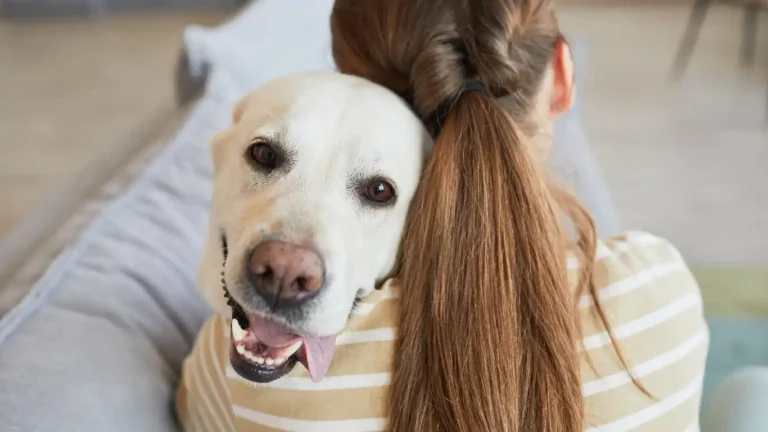Best Practices for Feeding Your Dog on a Schedule for Health and Happiness
Feeding your dog on a schedule might sound simple, but from my years working as a Veterinary Technician specializing in nutrition, I can tell you there’s a lot more to it than just putting food down twice a day. The best practices for feeding your dog on a schedule go beyond routine — they shape your dog’s overall health, behavior, and happiness. When you get it right, mealtime becomes something your furry friend looks forward to without stress or fuss, and their digestive system stays happy too.
One thing I always tell pet parents is that dogs thrive on consistency. Think about it — in a clinic setting, when we adjust feeding times or meals randomly, it often leads to digestive upset or even behavioral issues like begging or anxiety around food. That’s why a solid feeding schedule isn’t just about convenience; it’s an important part of your dog’s daily routine and well-being.
Why Feeding on a Schedule Matters

When dogs eat on a regular schedule, several benefits come into play:
- Improved digestion and metabolism: Predictable meal times help their digestive system work efficiently and reduce the risk of upset stomach or obesity.
- Behavioral stability: Dogs with irregular feeding times can become anxious or overly fixated on food, leading to begging or overeating.
- Easier health monitoring: Scheduled feeding allows you to track how much your dog eats and notice early if something’s off, like reduced appetite or changes in stool.
In my experience, clients who stick to consistent meal times often notice their dogs feel more settled throughout the day. It’s like having a rhythm — it calms them and improves their overall mood.
Setting the Right Feeding Schedule for Your Dog

Every dog is unique, so tailoring a feeding schedule to your dog’s age, breed, activity level, and health needs is key. Here’s a general guideline that I use and recommend:
- Puppies (up to 6 months): Feed 3 to 4 small meals a day to support their rapid growth and high energy.
- Adult dogs (1-7 years): Twice a day is usually ideal — morning and evening meals spaced about 8-12 hours apart.
- Seniors (7+ years): Still twice a day, but sometimes smaller portions are better, depending on their health and activity.
One trick I’ve learned in clinics is to pick feeding times that fit your own schedule but stay consistent daily — whether it’s 7 am and 6 pm or noon and 7 pm. Consistency beats convenience every time when it comes to your dog’s digestion and behavior.
Portion Control and Quality Matter
Scheduling meals isn’t just about timing — it’s also about what and how much you feed. From my hands-on experience with nutritional counseling, feeding the right amount prevents weight gain and nutritional imbalances. Here are some tips:
- Use measuring cups or a scale to portion food precisely. Eyeballing portions is a recipe for overfeeding.
- Choose high-quality dog food tailored to your dog’s life stage and health. Low-quality fillers won’t provide the nutrition your dog needs.
- Consider supplementing with vet-approved treats or fresh foods but factor those into daily calorie counts.
As a vet tech, I’ve seen many dogs struggle with weight issues because owners didn’t monitor portions or combined free feeding with scheduled meals — it’s confusing for their metabolism. If you stick to scheduled, measured meals, you can keep your dog’s weight healthy and their energy steady.
Handling Special Situations: When to Adjust Your Dog’s Feeding Schedule

Even with the best practices for feeding your dog on a schedule, life sometimes throws a curveball. From illness to changes in activity, your dog’s feeding routine might need a little tweak now and then. One thing I’ve learned from working closely with dogs and their families is that flexibility paired with knowledge is key.
For example, if your dog is recovering from surgery or illness, their appetite might dip, or they may need smaller, more frequent meals. In those situations, sticking rigidly to the usual schedule can actually stress them out or slow recovery. Instead, I recommend consulting with your vet and adjusting portions and timing accordingly, always aiming to maintain that underlying structure without making it too rigid.
Another common scenario is changes in your dog’s activity level. Say you usually have an energetic dog that gets two hours of play daily, but suddenly you have to cut back due to weather or a busy schedule. This shift affects their calorie needs and might require reducing portion sizes or meal frequency to avoid unwanted weight gain. I’ve seen many pet parents miss this connection, leading to sluggish, overweight pups.
Travel and Feeding Schedules: Keeping Consistency on the Go

Traveling can be a whole different ballgame. Changing environments and routines can throw dogs off their usual feeding schedule, sometimes causing digestive upset or stress-related behaviors. From my experience in vet clinics, I always encourage clients to try and keep mealtimes as close to normal as possible even when on the road.
Here’s a quick checklist I often share to keep your dog’s feeding routine smooth during travel:
- Pack familiar food and bowls: Sudden diet changes can cause tummy troubles.
- Stick to usual feeding times: Try to feed your dog within the same windows you use at home.
- Offer smaller meals if necessary: Sometimes less food during travel helps ease digestion.
- Monitor water intake: Hydration is crucial, especially if travel involves changes in climate or activity.
In my personal experience, dogs pick up on their owners’ stress, so staying calm and consistent really helps keep their routine—and appetite—on track.
How to Handle Multiple Dogs on a Feeding Schedule

Feeding multiple dogs on a schedule can be a challenge, especially if they have different dietary needs or eating habits. From working in busy veterinary clinics, I’ve learned some practical tips that make this process easier and less stressful for both dogs and owners.
First off, separate feeding areas are a lifesaver. Not only does this prevent food guarding or competition, but it also allows you to customize portions and monitor each dog’s intake carefully. I remember one case where two dogs were fed in the same room, and the more dominant dog would finish both meals, leaving the smaller one underfed. Separate feeding zones fixed that problem fast.
Secondly, timing matters. Stagger feeding times by a few minutes if your dogs tend to get anxious or distracted by each other. This helps them focus on their own bowls and reduces stress. And of course, keep to a strict schedule — consistency really smooths out any tension around mealtime.
Lastly, if your dogs have different nutritional needs (say one is a senior and the other a high-energy adult), talk with your vet to create tailored feeding plans. That way, each dog gets exactly what they need without compromising the schedule.
What to Do if Your Dog Refuses to Eat on Schedule
It can be worrying when a dog suddenly refuses their scheduled meal. From my years in nutrition counseling, this is a fairly common concern, but usually not something to panic about immediately. Sometimes dogs just need a little motivation or minor adjustments.
Here are some quick tips I often recommend:
- Check for health issues: Loss of appetite can signal illness. If your dog consistently refuses meals, a vet visit is a must.
- Evaluate food quality: Has the food changed? Dogs can be picky, especially if the kibble or formula is different.
- Try warming the food slightly: This can bring out aroma and entice your dog to eat.
- Maintain calm and patience: Avoid turning mealtime into a stressful event by forcing or coaxing aggressively.
When I worked with a senior dog who lost interest in food, simply warming the meals and adjusting feeding times helped immensely. It’s often about understanding your dog’s preferences and subtle cues.
Tips for Creating a Feeding Routine That Works for You and Your Dog

Establishing the best practices for feeding your dog on a schedule is as much about your lifestyle as it is about your dog’s needs. Over the years, I’ve found that the most successful feeding routines come from a mix of consistency, observation, and a little trial and error. Here’s some advice based on what I’ve seen work best for real families and their furry pals.
1. Pick Times That Fit Your Daily Rhythm
Choose feeding times that match your daily flow. It’s easier to stick with a schedule if it doesn’t feel like a chore. Maybe you’re a morning person who’s up early — feed your dog then. If evenings are more relaxed, schedule dinner later. Whatever you choose, keeping those times steady will help your dog anticipate meals and stay relaxed.
2. Use Feeding as Training Opportunities
Mealtime is a perfect chance to reinforce good manners and bonding. Teaching your dog to wait calmly before eating or to sit before their bowl goes down can turn feeding into quality bonding moments. This approach also supports good behavior long term. When I coached clients, they often noticed a huge drop in food-related excitement or anxiety just by adding these small habits.
3. Avoid Free Feeding
Leaving food out all day sounds convenient, but it can encourage overeating and makes it hard to track how much your dog actually consumes. Scheduled meals help control portions and prevent weight issues. I’ve helped many pet parents transition their dogs off free feeding to a timed schedule with great results, including improved weight management and less begging.
4. Monitor and Adjust as Needed
Even the best feeding schedules might need tweaks over time. Growth spurts, health changes, or lifestyle shifts can mean your dog’s nutritional needs evolve. Keep an eye on their weight, energy, and overall health. If you notice changes, don’t hesitate to revisit your feeding plan — and consult your vet if unsure. I always recommend regular check-ins for this reason, especially with senior dogs or those with health conditions.
Common Myths About Feeding Dogs on a Schedule

There are plenty of misconceptions floating around about feeding dogs on a schedule, and I want to clear up a few that I hear all the time in the clinic:
- Myth: Dogs should eat whenever they want. While some dogs do free feed in shelters or kennels, most thrive on routine. Scheduled meals support better digestion and reduce behavioral problems related to food anxiety.
- Myth: More meals equal better nutrition. More frequent meals aren’t automatically better. Puppies do need extra meals, but adult dogs usually do well with two solid meals a day. Overfeeding can cause weight gain and health issues.
- Myth: Feeding once a day is fine for adult dogs. Once-a-day feeding is generally not recommended because it can lead to hunger-related stress and potentially increase risks like bloat in larger breeds. Twice a day is a safer bet.
Dispelling these myths helps you feel more confident in setting up a feeding routine that’s healthy and effective. Based on my clinical experience, a scheduled approach that fits your dog’s unique needs is the way to go.
Wrapping It Up: The Importance of Personalized Feeding Schedules
From my time as a Veterinary Technician/Nurse specializing in nutrition, I can’t stress enough that feeding your dog on a schedule isn’t one-size-fits-all. It requires attention to your dog’s individual health, behavior, and lifestyle, along with some flexibility when life changes. Consistency paired with quality nutrition and observation creates a routine that supports your dog’s health for years to come.
Remember, this isn’t just about food — it’s about building trust, reducing stress, and helping your dog live their best life. If you’re ever in doubt, don’t hesitate to reach out to your veterinarian or a qualified pet nutrition specialist. They can help tailor a plan just right for your furry friend.
References
- American Gastroenterological Association
- American Veterinary Medical Association
- American Animal Hospital Association
Disclaimer
The information provided here is based on my professional experience as a Veterinary Technician/Nurse specializing in nutrition, combined with current veterinary guidelines. However, this article does not replace professional veterinary advice. Always consult your veterinarian before making changes to your dog’s diet or feeding schedule, especially if your dog has underlying health conditions.





